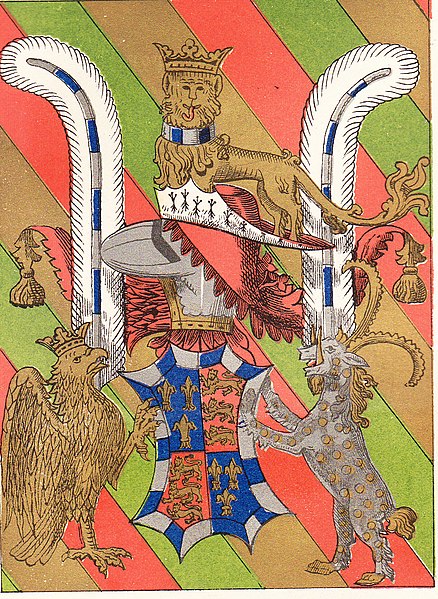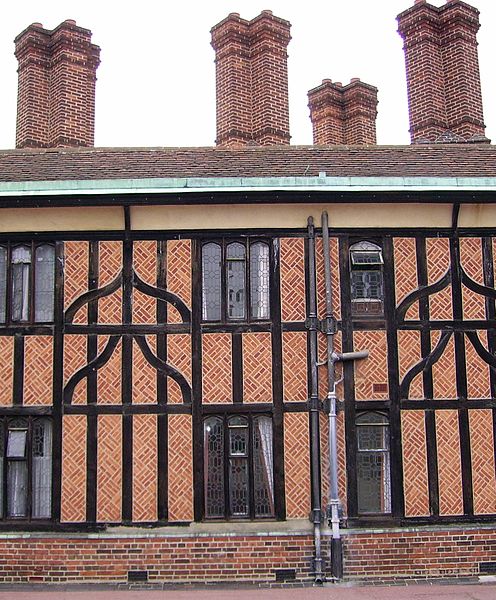Garter stall plates are small enamelled brass plates located in St George's Chapel displaying the names and arms of the Knights of the Garter. Each knight is allotted a stall in St George's Chapel and the stall plate is affixed to his personal stall. His successor knight in that stall adds his own stall plate and thus a fairly complete series of stall plates survives for the successive occupants of each stall. Many other ancient European orders of chivalry use similar stall plates in the home church or other building of their order.
Stalls of Knights of the Garter in St George's Chapel. The Garter stall plates are visible affixed to the rear panelling of each stall
John Beaufort, 1st Duke of Somerset (1403–1444)
Henry Bourchier, 1st Earl of Essex (c.1405–1483)
George Cadogan, 5th Earl Cadogan (1840–1915)
St George's Chapel, Windsor Castle
St George's Chapel at Windsor Castle in England is a castle chapel built in the late-medieval Perpendicular Gothic style. It is a Royal Peculiar, and the Chapel of the Order of the Garter. St George's Chapel was founded in the 14th century by King Edward III and extensively enlarged in the late 15th century. It is located in the Lower Ward of the castle.
St George's Chapel, Windsor Castle
St George's Chapel (left) at Windsor Castle in 1848, showing the absence of the Queen's Beasts on the pinnacles (since replaced). Watercolour by Joseph Nash
The Choir of St George's Chapel, by Charles Wild, from W. H. Pyne's Royal Residences, 1818
The Horseshoe Cloister, built in 1480 and reconstructed in the 19th century








